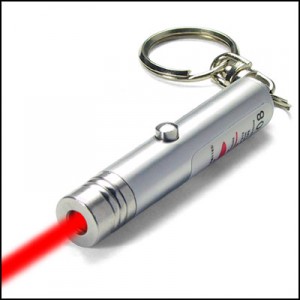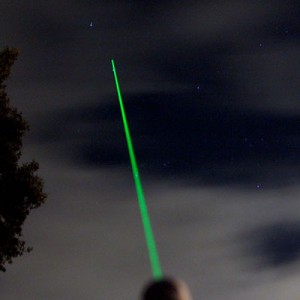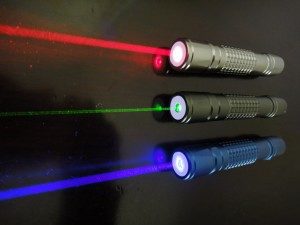 There’s a new menace in the sky these days, and considering the state of the old menaces, you’d think this would be a big headline. There are a lot of things floating above our heads at any given time; airplanes – both commercial and military – drones, birds, even chunks of meat sometimes, and of course, the ever popular yet elusive UFO.
There’s a new menace in the sky these days, and considering the state of the old menaces, you’d think this would be a big headline. There are a lot of things floating above our heads at any given time; airplanes – both commercial and military – drones, birds, even chunks of meat sometimes, and of course, the ever popular yet elusive UFO.
In recent years, the study of and search for UFO’s has become a national obsession in the US and other countries. So much so that amateur sky-watchers are gathering in droves to, well…look up.
There are upwards of 50 professional UFO networks or groups operating around the world, and probably many thousands more amateur UFO groups seeking evidence of UFO’s. MUFON, or the Mutual UFO Network is the largest self-managed UFO group today and through them thousands of would-be investigators are documenting and actively seeking encounters with and sightings of unexplained objects in the air. There appears to be no shortage of related phenomena to experience, though some people are trying to hedge their bets a bit and take things into their own hands.
When a UFO enthusiast or UFOlogist ventures out into the night (or day really) to search the skies for UFO’s, they’re at the mercy of unknown forces. Will they see something? Will the night be a waste? Who knows?! Some people, however, are trying to tip the odds in their favour by attracting or enhancing UFO’s with the use of simple consumer electronics. They’re using laser pointers to target objects in the sky, and in some cases to “power up” UFO’s.
 On January 7th 2014, Australian UFOlogist Alan Ferguson posted a video to his website wherein a fellow UFO enthusiast, Peter Slattery, used a consumer grade laser pointer to “power up” an unidentified object in the sky over Albury, Australia.[1] Ferguson’s associated commentary tells of a similar experience he had himself a week earlier, noting that in his case the object increased in size by five times when he targeted it with a laser pointer. Ferguson claims that this practise of pointing lasers at UFO’s is a part of a shift in understanding about such phenomenon and that the video is an example that progress is being made.
On January 7th 2014, Australian UFOlogist Alan Ferguson posted a video to his website wherein a fellow UFO enthusiast, Peter Slattery, used a consumer grade laser pointer to “power up” an unidentified object in the sky over Albury, Australia.[1] Ferguson’s associated commentary tells of a similar experience he had himself a week earlier, noting that in his case the object increased in size by five times when he targeted it with a laser pointer. Ferguson claims that this practise of pointing lasers at UFO’s is a part of a shift in understanding about such phenomenon and that the video is an example that progress is being made.
There are some problems with this approach, not the least of which is the apparent lack of understanding of how light interacts with objects of different opacity and density, thereby making the video and Ferguson’s direct experience interesting to look at, but hardly helpful in terms of evidence. More importantly though, this practise is potentially dangerous, and some are speaking out to condemn it.
In response to Ferguson’s post, pilot and retired president of an Australian pilot’s association, Barry Jackson expressed his concerns to NT News, claiming that such efforts could potentially have catastrophic effects if the laser beam interferes with the operation of an airplane.[2]
 Laser pointers, like any laser, use electricity to generate a coherent beam of light. In the case of consumer grade pointing devices, they have limited power. In the US such lasers are limited to 5mW of power, while in the UK, Australia and some other countries they’re limited to 1mW by law. As a result of this low power, the average laser pointer is extremely unlikely to do direct harm to an aircraft or to affect its operation in any way, except if the beam happens to penetrate the cockpit and temporarily blind the pilot.
Laser pointers, like any laser, use electricity to generate a coherent beam of light. In the case of consumer grade pointing devices, they have limited power. In the US such lasers are limited to 5mW of power, while in the UK, Australia and some other countries they’re limited to 1mW by law. As a result of this low power, the average laser pointer is extremely unlikely to do direct harm to an aircraft or to affect its operation in any way, except if the beam happens to penetrate the cockpit and temporarily blind the pilot.
This danger has been known for some time, and laws are in place to protect people from the potential hazards. Even low-power laser pointers can cause temporary injury to the retina if the beam is directed into the eye for a prolonged period and the person actively resists the blinking reflex. Though the higher the laser power, the greater the potential for damage.
All is not safe though. Even with regulatory laws in place to limit the power of consumer grade lasers, it is possible to obtain higher-powered lasers with little effort. Such “burning lasers”, with power exceeding 5mW and often requiring AC power rather than batteries, are marketed as tools for cutting light plastics and paper, and their appearance can be very similar to the low-power units. This of course, gives rise to the potential for accidental exposure to higher-powered lasers.
The issue isn’t really as cut and dried as that though, in spite of many people and organizations trying to make it so.
 As mentioned, lasers are coherent beams of light, or electromagnetic radiation. This means that they emit photons in a straight, tightly packed beam. This cohesion gives the beams the ability to travel large distances without losing appreciable amounts of energy. But they don’t travel forever.
As mentioned, lasers are coherent beams of light, or electromagnetic radiation. This means that they emit photons in a straight, tightly packed beam. This cohesion gives the beams the ability to travel large distances without losing appreciable amounts of energy. But they don’t travel forever.
A standard consumer grade laser pointer can generate a beam that is capable of travelling over 50 feet before it very gradually starts to lose cohesion. Beyond that point, the further it travels the less cohesive the beam will be at its terminus. You can see this in action when you point one at an object at great distance; if you can still see the dot, you’ll notice it’s bigger than it was when pointed at closer objects. Higher power lasers have greater cohesion and therefore can travel further while retaining that cohesion. The less cohesion, the less dangerous the beam will be in terms of damage to the human eye.
Some simple math should tell you that a consumer grade laser pointer isn’t going to have a big effect on a commercial airliner travelling at 500mph at 30,000 feet. Even if you were lucky enough to hit the cockpit and the pilot’s eye, the plane would likely be on autopilot and the resulting disaster would be avoided. Planes don’t stay at 30,000 feet all the time though, and it’s when they’re closer to the ground that the problem exists.
According to Jackson, many airplanes don’t have automatic landing systems, therefore the pilot is in full control of the craft as they land. A stray laser beam at this time could indeed be disastrous. While damage to the pilot’s eyes is still unlikely at that distance, distraction during a period when they require total focus would be the likely outcome. Obstructing glare and temporary night-blindness could also result.
So it’s clear that laser pointers and landing aircraft are a terrible mix, but is the call to alarm over this issue really necessary? There is much to read about the dangers of laser pointers, and while there is a sensational story out of JFK airport in New York – wherein a JetBlue pilot sustained retinal damage from a laser pointer being aimed at his plane during a landing attempt – and several stories exist about people being arrested and jailed for similar attempts, to date, not one aircraft has been brought down because of a laser pointer.
The potential remains, so it’s a good idea to not flash laser pointers into the sky, and of course, the benefits of doing so also remain unclear. Are there really that many UFOlogists targeting aircraft with lasers of any power level? Seems unlikely that this is happening as often as some think. As such the underlying point of all this furor is valid, but the hype may not be necessary.
